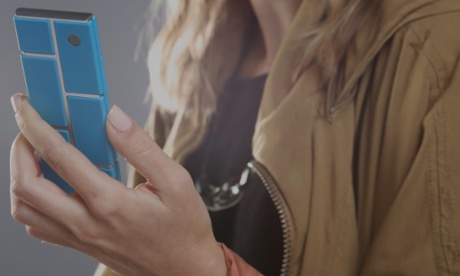1. BGR gives the world an exclusive first look at the unannounced smartphone Amazon is set to debut in the coming months
After years of development, Amazon is finally close to unveiling the first of several own-brand smartphones.
At a distance, Amazon’s upcoming flagship phone looks much like any other touchscreen phone on the market. But the company has spent years creating a unique and, at times, novel user experience that has two main focuses: Amazon products and services, and a custom 3D interface unlike anything we have seen before on a smartphone.
BGR have obtained exclusive photos of a prototype of the unreleased device, giving the world its first look at Amazon’s hotly anticipated phone.
As can be seen in the images, the device is covered by a protective shell intended to prevent people without authorization from seeing the physical design of the phone. Some areas of the photos have also been blocked or otherwise obscured by BGR.
The device set to debut in the coming months will be a higher-end model that has been in development at Amazon for several years. This sources state that the new Amazon phone includes a total of six cameras.
The main rear camera is thought to feature a resolution of 13 megapixels, and the phone also includes a standard front-facing camera for video chats as well as Amazon’s Mayday customer service feature.
Beyond those two units, the device houses an additional four front-facing cameras that work with other sensors to facilitate the software’s 3D effects. One source tells that these four cameras, which are situated in each of the four corners on the face of the phone, are low-power infrared cameras.
The device’s extra cameras are used to track the position of the user’s face and eyes in relation to the phone’s display. This allows Amazon’s software to make constant adjustments to the positioning of on-screen elements, altering the perspective of visuals on the screen.
2. Could This Be The Samsung Galaxy Glass?
http://www.geeky-gadgets.com/could-this-be-samsung-galaxy-glass-15-04-2014/
Google sold their Google Glass to the general public for one day only, the device was available for just yesterday for $1500. Previously the Google Glass Explorer program had been by invite only, but Google are now letting anyone purchase Google Glass today, although there are no details on how many of the wearable device are available.
If you didn’t get one yesterday, how about the Samsung Galaxy Glass?
We already know that Samsung is working on a Google Glass competitor, the device is said to be called the Samsung Galaxy Glass, and the last thing we heard about the device was that it would launch before the end of the year.
We previously heard that Samsung Galaxy Glass may be announced at IFA 2014 in September, and now some new patent filings have revealed a device which may end up being Samsung’s Google Glass competitor.
As you can see from the photo above, the device is a headphone with a built in HUD or Head Up Display, which seems like an interesting idea. If you watched the carton: dragon balls, you might love it because it is very similar to the one of Saiyan.
If this is actually Samsung Galaxy Glass, then this would mean that the device would be used without the need to wear glasses, instead it would be similar to a standard Bluetooth headset.
3. Lechal haptic footwear guides you by buzzing your feet
http://www.gizmag.com/lechal-haptic-feedback-navigation-shoes/30939/
http://lechal.com
This products from Lechal aimed at helping all people navigate the city streets. There are actually two Lechal products – a complete set of shoes, and polyurethane insoles that can be put inside existing shoes.
In both cases, they work by communicating with the user's smartphone via Bluetooth. In order to guide the user from their current location to their destination, it lets them know where and when to turn by causing one of the shoes to vibrate – the left shoe for a left turn, and the right for a right.
Besides its use for navigation, Lechal can also be utilized as a fitness tracking system, as it's able to count steps, track calories burned, and create interactive workouts. It'll also buzz your shoes to let you know you've left your phone behind, or if you're traveling and are near points of interest – in the latter situation, you'd proceed to check the app display to see what the point of interest is.
The shoes have started taking preorders since March 7. Both the insoles and the shoes will be priced at US$100.
http://youtu.be/QCE27-bJRO4
4.Mi.Mu Glove for Music
https://www.kickstarter.com/projects/mimu/mimu-glove-for-music?ref=discovery
The gloves capture the movements and postures of your hands. Their software allows this information to be mapped to musical control messages which can then be easily routed to users' favourite music software.






















